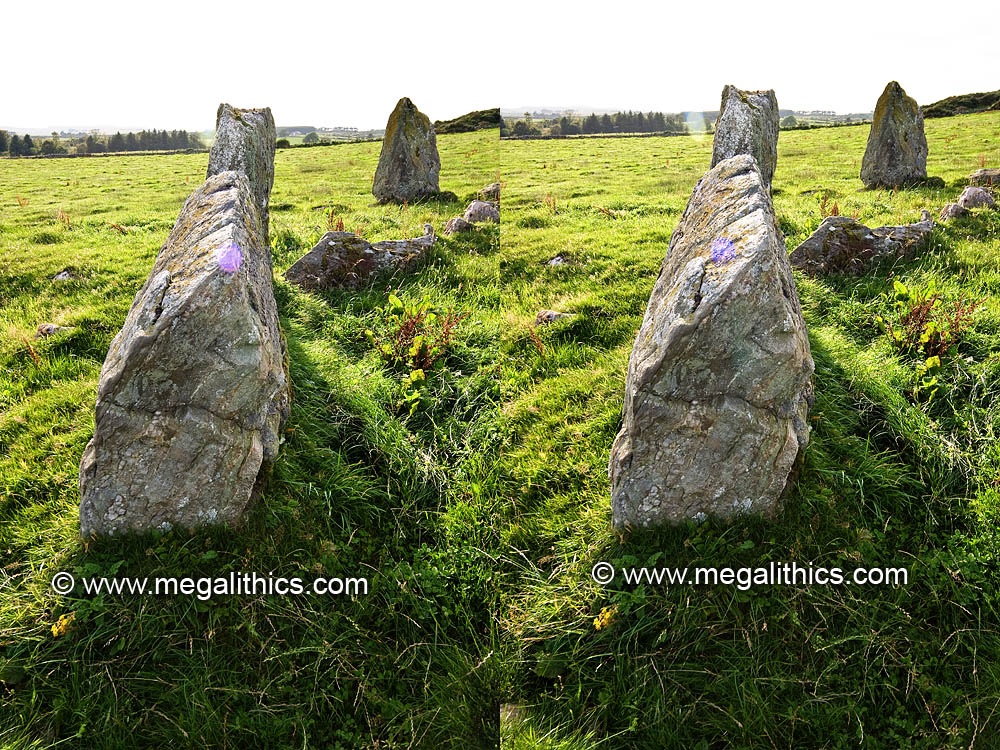
The 3D views below are stereo pairs
adjusted for crossed eye viewing.
These can be viewed with the naked eye, but as with our parallel viewing, the
technique takes a little getting used to.
If you have not viewed images like this
before, or are having trouble seeing in 3D,
consult our 3D Viewing Help Page for tricks, tips and information.

The recumbent stone viewed edge-on.
This face of the stone would have originally been concealed by the now missing
eastern flanker.
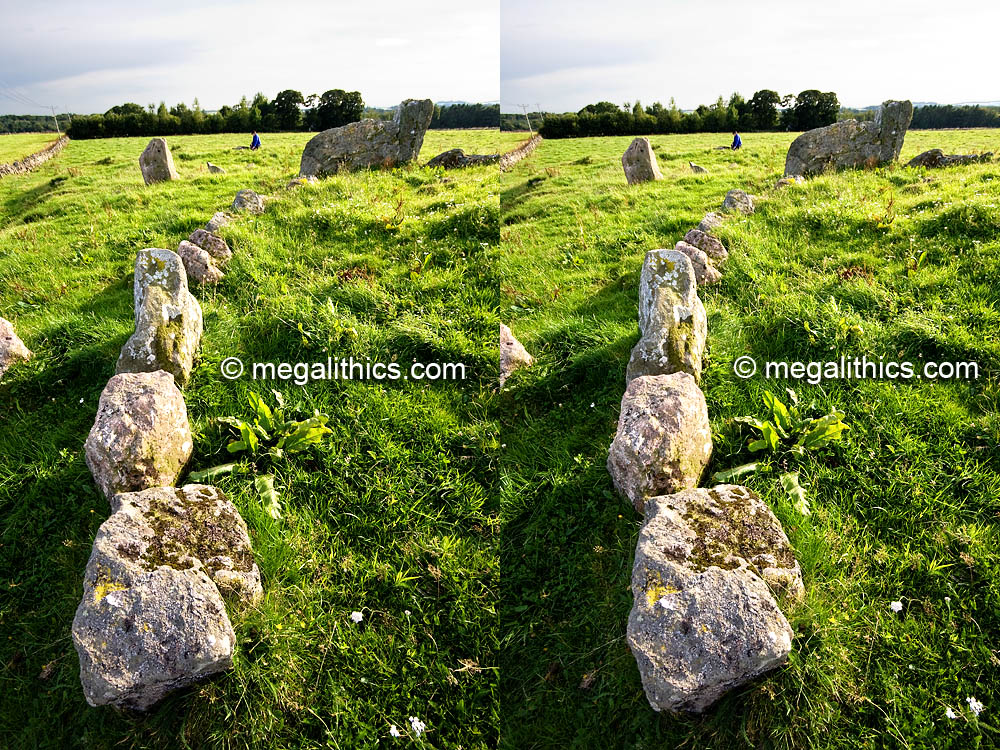
The outer ring-cairn kerb.
This eastern stretch contains the tallest kerb , the third stone in, this stands
1m high.
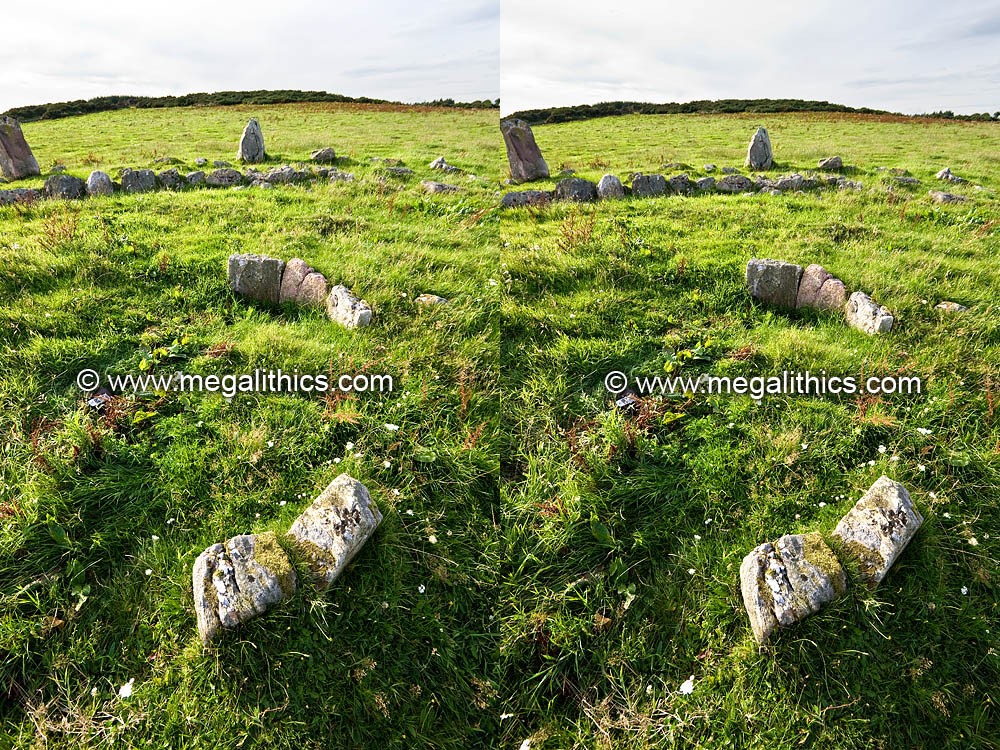
The inner kerb of the ring-cairn.
Although only five stones remain it is easy to visualise the complete circle.
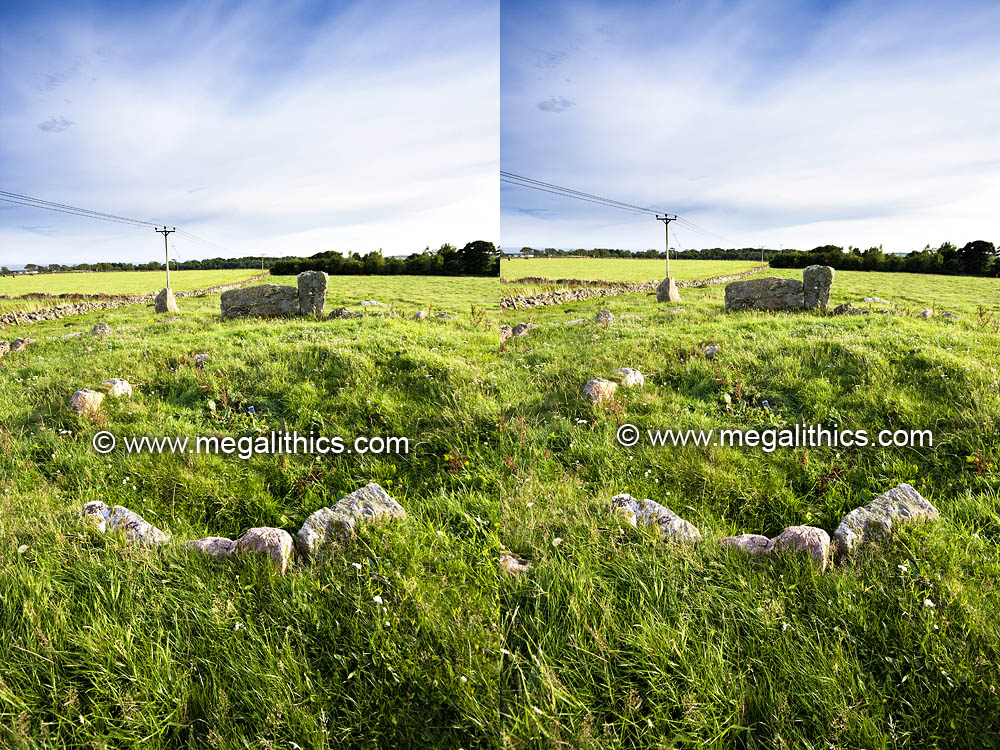
View south over the inner cairn kerb to the recumbent.

The southwestern arc of the outer cairn
kerb.
Note how the kerb curves out of the circular path to join up to the
western flanker.
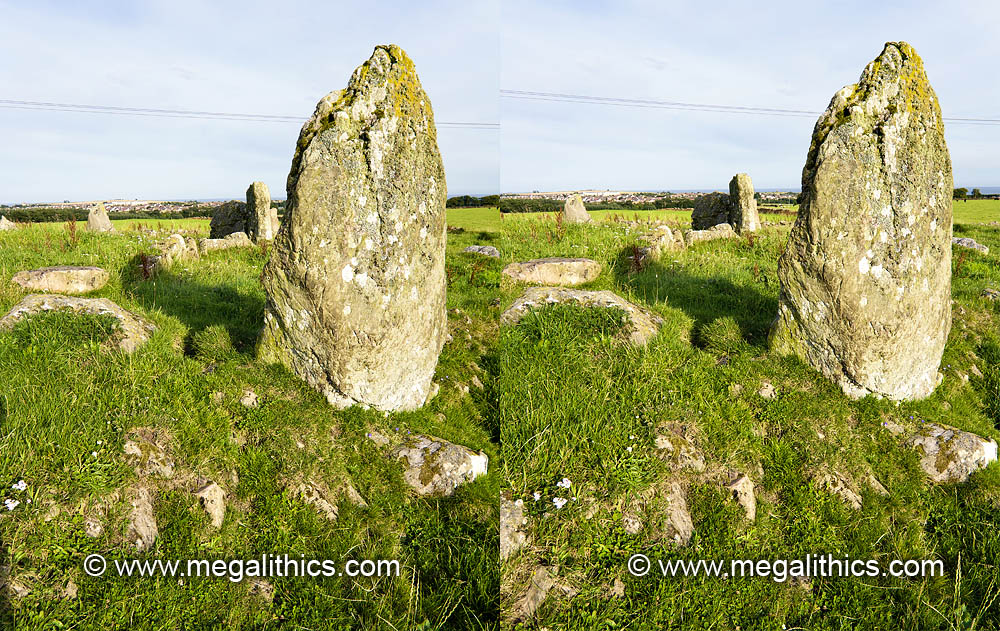
The recumbent and ring cairn viewed past the south western circle stone.

The entire circle viewed from the south.
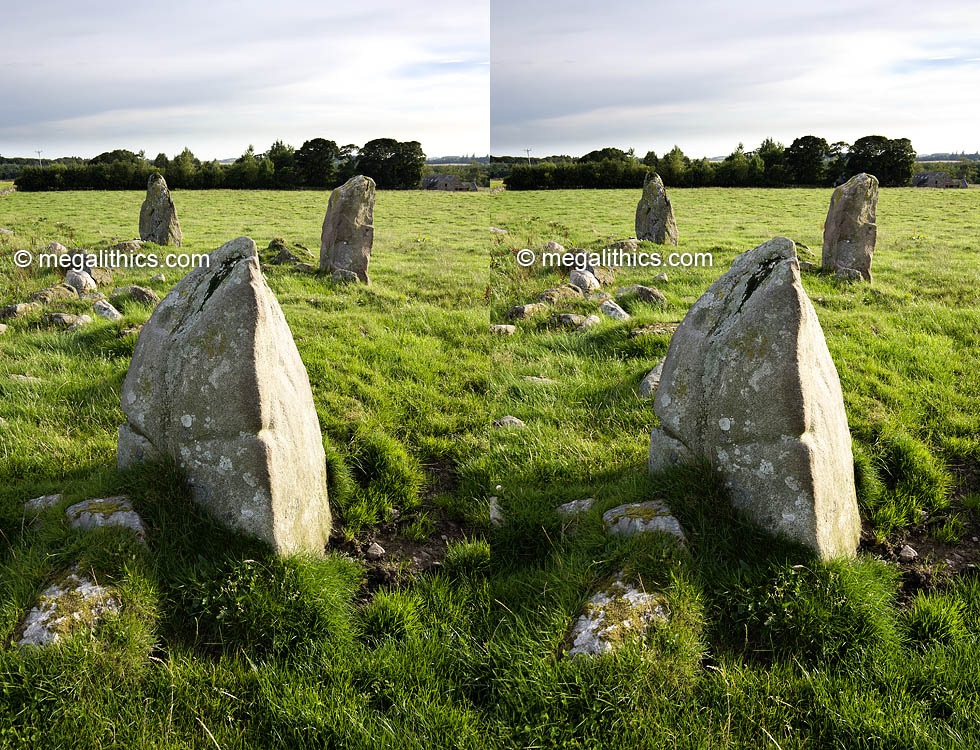
The western arc of the stone circle.
These are the three tallest surviving stones note how the height increases to
the south in keeping with the circle's height grading.